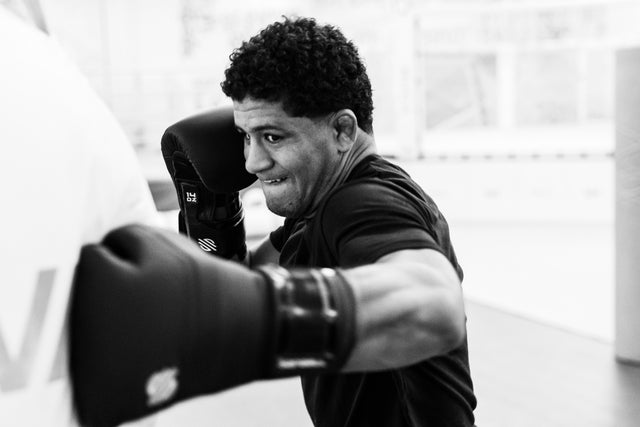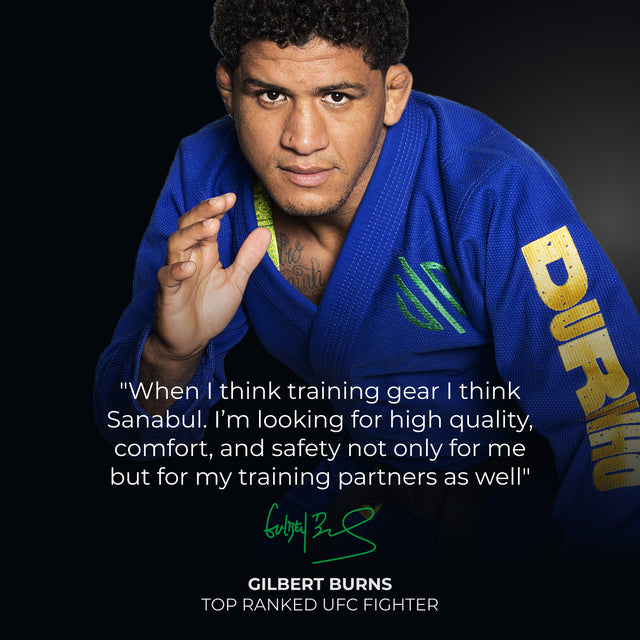Bag Gloves vs Pad Gloves vs Sparring Gloves
Your equipment is an investment in your training. Depending on your level of experience and skill, you may have a number of different boxing gloves - each for their own specific purpose. This article will explain some different types of boxing gloves, what they may be used for, and if you should consider having multiple pairs of gloves for various uses.
Bag Gloves
Bag gloves are gloves designed specifically for punching the heavy bag. These gloves have less padding and wrist support than conventional boxing gloves. These lighter weight gloves also have a loose thumb sleeve that is not attached to the main padding of the glove (where your other four fingers are), as conventional boxing gloves do. Another difference between conventional boxing gloves and bag gloves is that bag gloves do not have a velcro strap or laces to secure the glove to the wrist. They have a bigger interior space for hands to easily slip in and out of.
Bag gloves are built this way for good reason. The loose, unattached thumb slot allows the user to make a correct fist when punching (thumb sandwiches the pointer and middle finger to the palm of the hand) and not just stay upright as in conventional boxing gloves. Combined with the roomy interior, the lack of velcro and laces for the glove’s wrist makes it convenient to slip the gloves on and off.
Along with thinner glove padding, the absence of a velcro strap (or laces) to secure the wrist in place when punching gives two big benefits. First, it will let the user know if they are punching correctly. If your wrist hurts or folds over before, during, or after punching, then your punching mechanics are not correct and you are not landing with the maximum amount of power that you are capable of.
Lack of wrist support forces your body to correct this, since the gloves don’t have a mechanism to stabilize your wrists for you. It is human nature to avoid something that really hurts, a principle that applies here. If you get wrist pain from punching, you will find a way to punch that does not hurt the wrists (aka the correct way to punch). Your body will figure this out for you naturally and you will have corrected any improper punching techniques. You will feel a massive difference in power and fluidity of your punches, if you previously had incorrect mechanics!
The second most noticeable benefit you will receive from little to no wrist support is improvements in wrist strength. Without a glove’s strap or laces to stabilize your wrist, your body will have to find a way to keep your wrists strong and stable when punching. In other words, the supporting muscles around the wrists will develop further and become stronger. With enough repetitions, proper form will become muscle memory and your wrists will be strong enough to stay firm when you punch.
The minimal padding and wrist support of bag gloves prioritizes a heavy focus on proper punching form for anyone who trains in them. They can help people to correct and maintain proper technique due to the feedback they provide when hitting the heavy bag.
Surprisingly, bag gloves are one of the only types of gloves that allow you to make a proper fist when punching, as the thumb is not obstructed from resting on top of your pointer and middle finger. Without the looser, unattached thumb slot of the bag glove, your fingers are not fully held in place when you punch, which can lead to potential injury. But how? Make a thumbs up sign with your hand. Attach your thumb to the side of your printer finger (as it would be in a boxing glove). Do the following in a controlled manner, since it is technically incorrect punching form: punch. If done with enough speed/power, you will feel your fingers (aside from the thumb) be pushed into the palm of your hand. This means that the fingers are not secure, something that you want to avoid when punching. Now do the same thing, but secure your pointer and middle finger by placing the side of your thumb over them. Your fingers won’t (or at least shouldn’t) move, because proper thumb placement holds your fingers in place and keeps your fist solid.
Sanabul Bag Gloves are currently in development and are coming soon.

Pad Gloves
The next pair of gloves that you should consider getting is a pair of pad gloves. These boxing gloves are only used when hitting pads/mitts with someone else. These gloves do not get used during sparring or on the heavy bag, as both types of training activities can break down the gloves’ padding faster. Gloves that are dedicated only to pads can last for quite a long time (when taken care of properly).
Many people like to use lighter pad gloves, as the lighter weight and padding give them good feedback on their technique during training sessions (same principle as bag gloves). On the other hand, there are also a lot of people who prefer heavier pad gloves to increase their strength and endurance when hitting pads (ex. Training in 18oz gloves and to get used to the weight, so that fighting in 16oz gloves is easier). It’s all preference and what you like when you hit pads.

Drilling/Sparring Gloves
The third pair of gloves that you should consider adding is for drilling/sparring. These gloves will likely take damage in areas that bag gloves and pad gloves may not even touch. When you drill combinations and spar with others, you are attacking and defending. Bag gloves and pad gloves are purely for throwing punches for offense, which means that most of the impact occurs on the top portion of the gloves (over the knuckles). When you spar, you will be defending incoming strikes in addition to throwing your own offense. When you defend strikes, your gloves will absorb impact in many different locations (like on the palm and back of the hand), which will break the overall padding down quicker.
Consider Multiple Pairs of Gloves
So who should have multiple pairs of gloves? It depends on your goals. If you train 1-2 times per week to stay in shape, then one pair of gloves will probably hold up for a while. If you train 3-5 times a week as a hobbyist, then you may want to consider owning one or two pairs of gloves.
If you are a fighter (amateur or professional) or aspiring competitor, you should definitely consider owning multiple pairs of gloves. Since gloves are the most commonly used gear that anyone will have, they will absorb much more impact than all other gear (ex. headgear, shin guards). Hours of training every day, anywhere from 5-6 days a week, will take it’s toll on your gloves.
To avoid replacing your gloves every few months, invest in a couple of good pairs of gloves, each with a specialized job to be used in. Owning multiple pairs of gloves can take the stress of impact off of one pair and evenly disperse the impact between them all (aka a longer product life and increased durability).
Think of them like baseball gloves. A middle infielder, corner infielder, outfielder, pitcher, and catcher all have a different type of glove compared to each other because they all have different functions. Middle infielders prefer smaller gloves to be able to transfer the ball to their throwing hand quicker. Corner infielders and outfielders have bigger gloves to be able to hold on to the ball more securely. Pitchers have a glove that hides the ball (so the batter can't see what pitch they may be throwing). Catchers have a glove with a lot of padding, since they can catch pitches at over 100mph.
Same idea applies to your combat sports gloves. Invest in your equipment to do specific jobs.
Thank you for reading - we hope this article explains the differences between different types of gloves and has led you to consider different options when it comes to your training gear!





0 Comments
There are no comments for this article. Be the first one to leave a message!